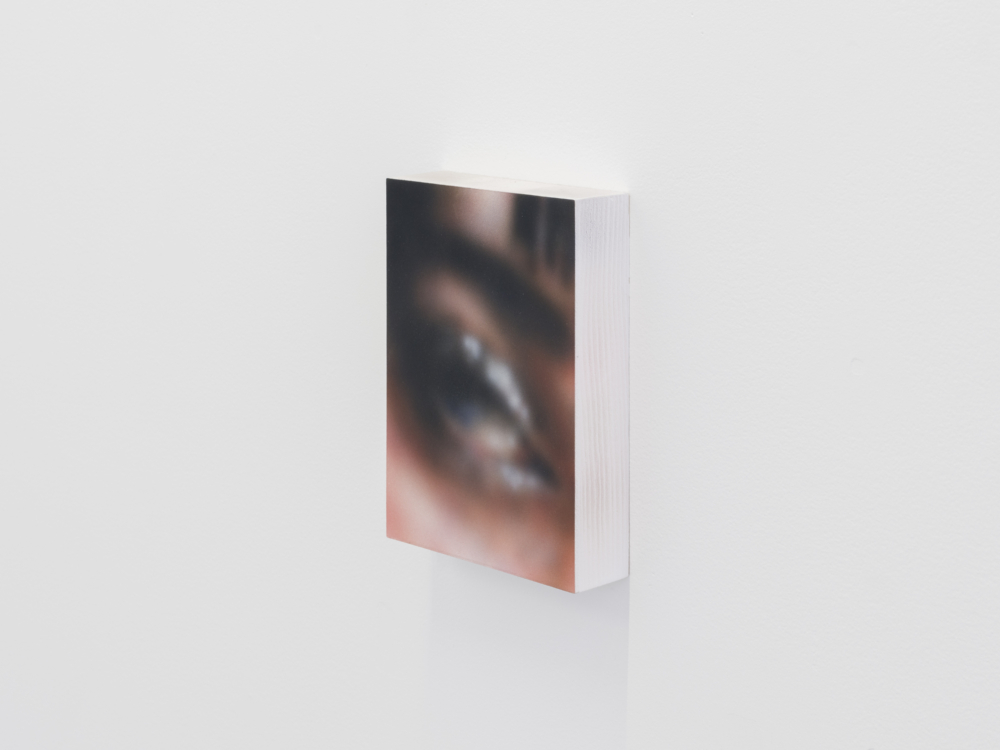Titled Kissy Face, Toronto-based artist Jake Santos’ new solo exhibition, showing at Blouin Division until early May, presents a series of miniature, close-up portraits rendered on wood panels. The paintings come to life through Santos’ curious technique—a strikingly soft airbrush worked within a photographic painting tradition to a deeply abstract effect. The portraits appear exactly like the subjects they represent, but blurred, like pictures shot on an out-of-focus camera. As he painted, Santos dwelled on the ambiguous borderland between voyeurism and intimacy. Looking at the exhibition, spectators come to reconsider the act of looking and being looked at. At what point does observation become intrusion? We ask. What does it mean to be captured in an image and looked at when you do not know it? What happens when we look back? The truth, Santos reveals, is ultimately a blur — literally.
Inspired by idyllic figures the artist encountered, film stills, and images fished from social media, Kissy Face interrogates the tension between desire and distance. Santos’ subjects, softened by a blurred sheen against sharp photographic realism, exist in a liminal space between hyper-visibility and carefully controlled opacity. The exhibition’s title itself captures this friction in its playful uneasiness, evoking the fleeting gestures, glances, and half-perceived expressions that define Kissy Face.
Days after opening in Blouin Division’s project space, Liminul sat down with Santos to discuss his artistic practice, the ethics of looking, and how Kissy Face challenges us to reconsider what it means to see and be seen.
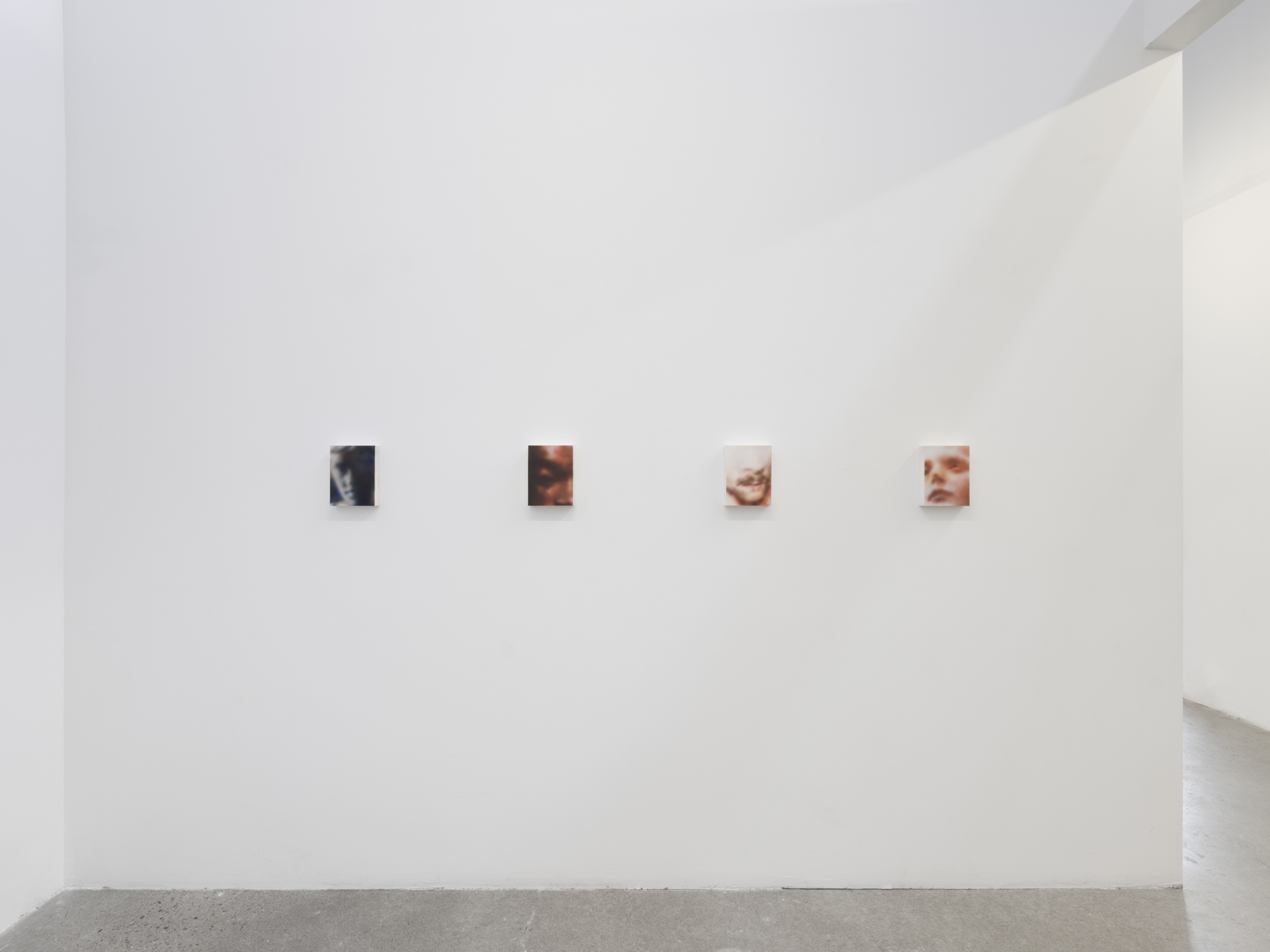
How did you come to art? I’d love to hear the full story in the most holistic way, including how you arrived at Kissy Face.
So I’m in my third year at OCAD now. I started a few years back and have always been in the painting program. Even before university, I went to an arts high school, so I’ve been making art for a long time.
Over the past year or so, I started using an airbrush in my work, and that’s really shifted my artistic direction. It’s changed not only the kind of work I’m making but also the way people are engaging with it, which has been really cool.
That said, I wasn’t always strictly a painter. I started with painting but also explored performance art and sculpture for a while. I still do a lot of writing on the side. I’ve experimented with different materials and mediums, but in the past year, I’ve found a way of painting that really resonates with me.
I think my core themes and interests have stayed pretty consistent throughout, though. That’s what ultimately led me to Kissy Face—it’s a concept I’ve had in my head for a while.
Kissy Face explores the boundary between voyeurism and intimacy, two forces intertwined yet often in tension. For you, where is the tipping point where looking crosses into something invasive, perverse, or obscene?
A lot of the themes that emerged revolved around voyeurism and the gaze—when does it feel romantic, authentic, or affectionate versus when does it become perverse or obscene? Perversion, not just in its usual sense, but in the way that being an artist itself carries a kind of perversion—this urge to look, to observe, to analyze, and to emotionally react to what’s seen.
I wasn’t trying to come up with answers but rather to explore how fluid that boundary between affection and perversion really is. The lines of intimacy aren’t as binary as we often perceive them to be.
I want to ask about the physical effect of the blur in your images. When I think about photography, I think about fetishization—the act of capturing something ephemeral and making it tangible. I’m curious about what the blur does for you and what you hope to create with it.
The blur—the softness—has always been an attraction for me. It plays into that middle ground, the abstract, the in-between. I think blurring things makes [the paintings] feel more understandable in a way. For younger generations especially, there’s something less obtuse, less individualistic about it. In a space where everything is so binary, finite, and easily defined—like facts and information—it’s refreshing to have space for ambiguity. There’s something about the undefined, the blurry, that paradoxically feels more real, even though it’s less seen.
But then, thinking about these paintings in an exhibition space, I wondered: if a voyeur’s gaze implies an unaware subject, what happens when the subject is conscious of being watched? In a gallery, that gaze could be reflected back at us. Instead of consuming the paintings, are they, in a way, consuming us?
I think the gaze is something so inherent in Western photography. There’s this sense of perverseness. In a gallery space, I wanted to make a clear statement, and it came down to intimacy and voyeurism: does intimacy become voyeurism when there’s no relationship to the subject?
I was intentional about sourcing images of people I didn’t know. It wasn’t that I felt I was veering into voyeurism, but I was questioning where that line is drawn. The title Kissy Face plays into this. It’s tongue-in-cheek, very Gen Z, irony-centric. It reflects how intimacy and voyeurism are embedded in how we engage with relationships today. Parasocial dynamics are inherently voyeuristic. You have thousands, even millions of people watching you, making this intimate yet public experience.
That was the core of my exploration: what does it mean to look and be looked at? What does it mean to look when the subject isn’t looking back? The flirtation of looking—the way looking can be playful but also perverse. Those were the questions that shaped the work.
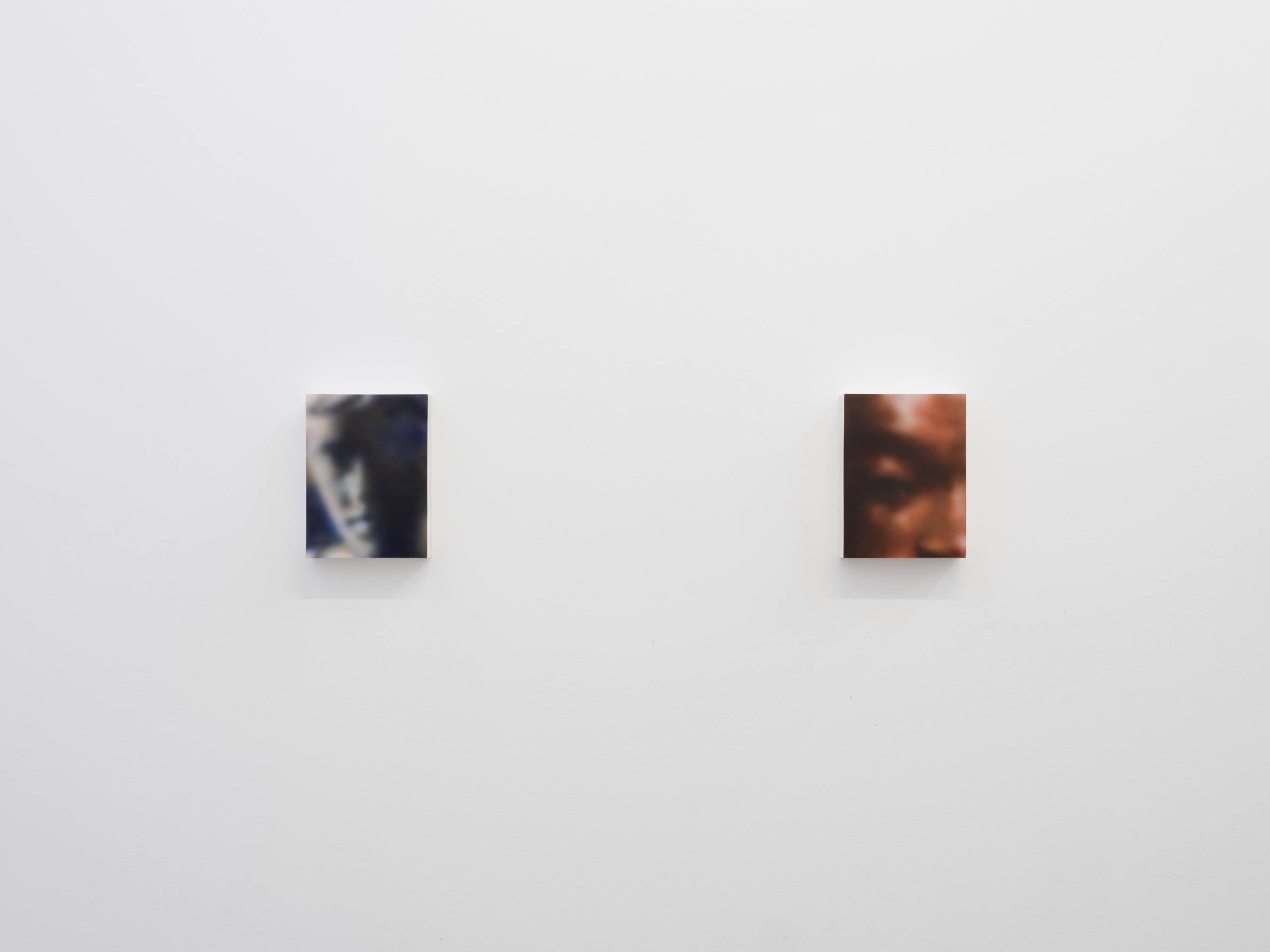
A common thread in parasocial relations is curation, from tailoring our public image online to the deliberate aesthetics of film. But beyond voyeurism, there’s also exhibitionism—the subject knowingly giving themselves to be looked at, even finding a thrill in it. How does the idea of exhibitionism connect to the softness and texture in your paintings? Do you see a kind of compassion or intimacy within this dynamic of self-exposure? Is there a tenderness in the act of offering oneself to be seen?
As a painter, I have to be an optimist, and the work is generally optimistic about intimacy. I wanted to capture a version of intimacy reflecting on our experience in the age of social media. I feel like past forms of intimacy can’t exist the same way anymore—they’re skewed by how we’re now consuming personalities and relationships. So I was interested in that awkward transition, the growing pains of understanding new forms of intimacy while still parasocially carrying remnants of voyeurism from the past.
The softness in my work acts almost like a veil, creating a separation between me, the painting, and the viewer. In a world where everything is hyper-sharp and refined—you see HD TVs and crazy computer screens—is it more intimate to refrain from information? Do you know somebody more if you see less? My paintings are cropped and soft because intimacy is often captured by fleeting details—the feel of somebody’s arm, their cheek, a subtle expression when they turn their head. That’s what I wanted to explore: the timid points of affection in which you recognize somebody.
As our understanding of intimacy expands, it’s still hard to tell when someone is shaping—even manipulating—how we perceive them. How do you navigate that balance? How do you tell when someone’s curation of their image is just self-expression versus something more calculated or even deceptive?
I think my optimism comes from complete pessimism. [laughs] At this point, the idea of purveying a version of yourself online as inauthentic has to be seen as authentic. Over the past decade, internet personalities have evolved, and identity itself now coexists with being online. These four, five, six faces that you occupy. Are they any less authentic? Not really because you’re still in control at the end of the day.
Voyeurism removes that control. Historically, it’s been used to strip the subject of agency. It probably doesn’t create intimacy because it lacks mutual participation. But it does raise questions about how we’ve been socialized through technology, our self-image, our bodies, and how surveillance plays into all of this.
But being optimistic about intimacy means recognizing and appreciating the ways it manifests in digital spaces. Social media isn’t a lesser form of connection; it’s just a new version of what already existed. No one posts an ugly side profile by accident. Even when they do, it’s still a conscious choice, which means control is never fully lost. That’s what fascinates me—pulling from these highly curated spaces, cropping, cutting, reframing, and stripping things out of context. In a way, it mirrors how we engage with social media itself.
Yet it’s not just other people watching us. There are also larger systems of power, like algorithms, governments, mass media companies, and employers, who have no business looking at someone’s Instagram. Within this lies the idea of protecting oneself by curating a self—this abstraction of a person as an online expression. How did you think about surveillance while making Kissy Face?
Surveillance has always been an interesting part of contemporary life and art. I also think of surveillance more conceptually. It can be as simple as someone taking a video on the street, and you end up in it, or appearing in a photo without realizing it. In those moments, subjects lose control over their own image, and that loss of control is interesting to me.
Kissy Face exists in this in-between space, between surveillance and photography, between losing control and intentionally curating your image. We grow up learning to curate how we’re perceived, especially in the age of social media. Even subconsciously, we understand the semiotics of how we present ourselves—what an outfit or an object in a photo might communicate. But where does that leave real-life intimacy? How does that distance between our curated online selves and our physical selves affect our ability to engage with others?
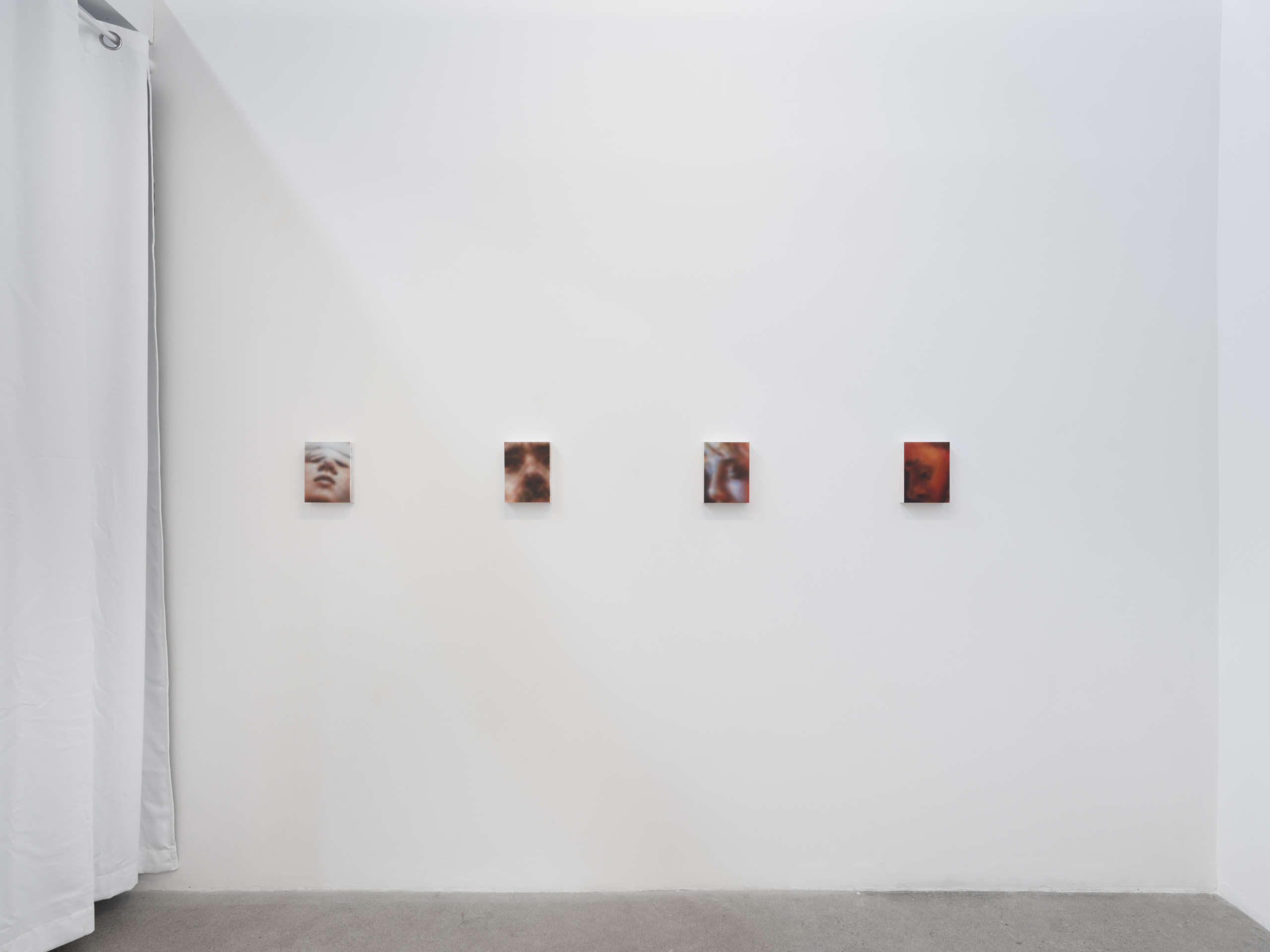
Given that humour plays a significant role in online interactions, how does it manifest within Kissy Face?
I really love the quality of internet language, like, Gen Z slang. I was reading this short story by Anna Levy about how these internet words like ‘brain rot’ reflect our culture. It got me thinking about how art and exhibitions often lean too heavily on being academic or poetic, which can sometimes feel sterile. I mean, I get it, but it doesn’t always feel authentic. It’s like, you’re 22, why are you talking like that? No one talks like that. So, I wanted to stay true to the culture I’m pulling from, to be more authentic and not put on a facade.
[The title] ‘Kissy Face’ felt right because it’s a physical action but in an intangible, almost distant way, like an air hug. And I like that ‘kiss’ feels a little uncomfortable to me. It’s like, a word that brings up weird associations, but that discomfort made it perfect. It’s uncomfortable in the best way.
How does this connect to your idea of presence in absence?
Presence in absence has been a concept a friend and I talked about for a while. Even before I was airbrushing, I was always drawn to that idea—presence in absence or absence in presence. With Kissy Face, you feel more than you see. With Gen Z, we’ve gotten used to having access to all the information, so when we can’t fully engage with something, it becomes more intriguing and uncomfortable. That lack of information makes it intimate.
Finally, tell me about your process. The airbrushing technique is full of contradictions. The medium never physically touches the canvas, but your work embodies intimacy, which implies closeness, touch, and physical connection. What do you make of this?
It’s an interesting medium, and I love contradictions. Using something physically distant from intimacy to explore closeness is fascinating to me. The airbrush will never be sharp, and I can’t paint with precision if I want to. It just comes out the way it does. It’s also just fun.
This interview has been edited for clarity.
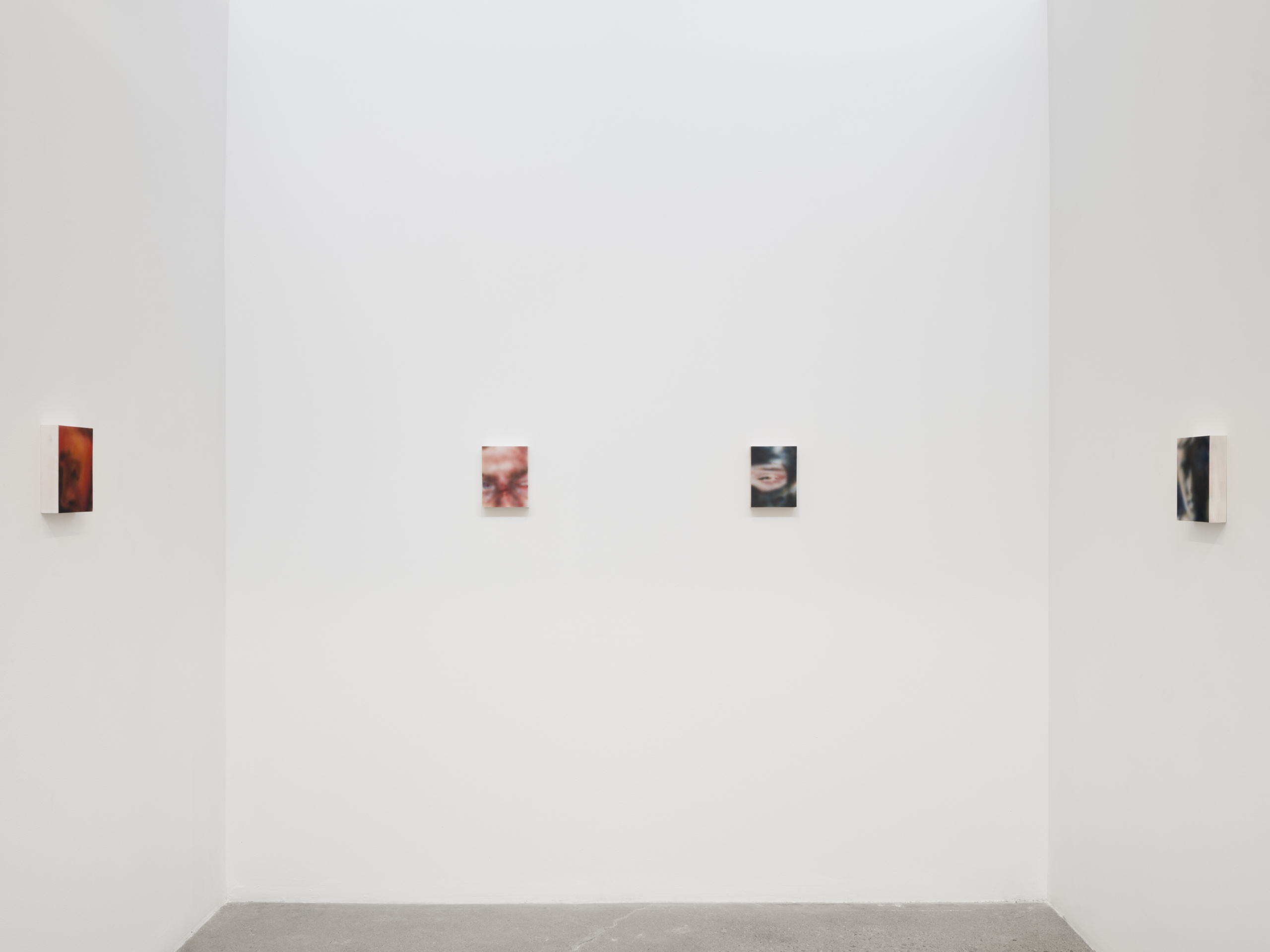
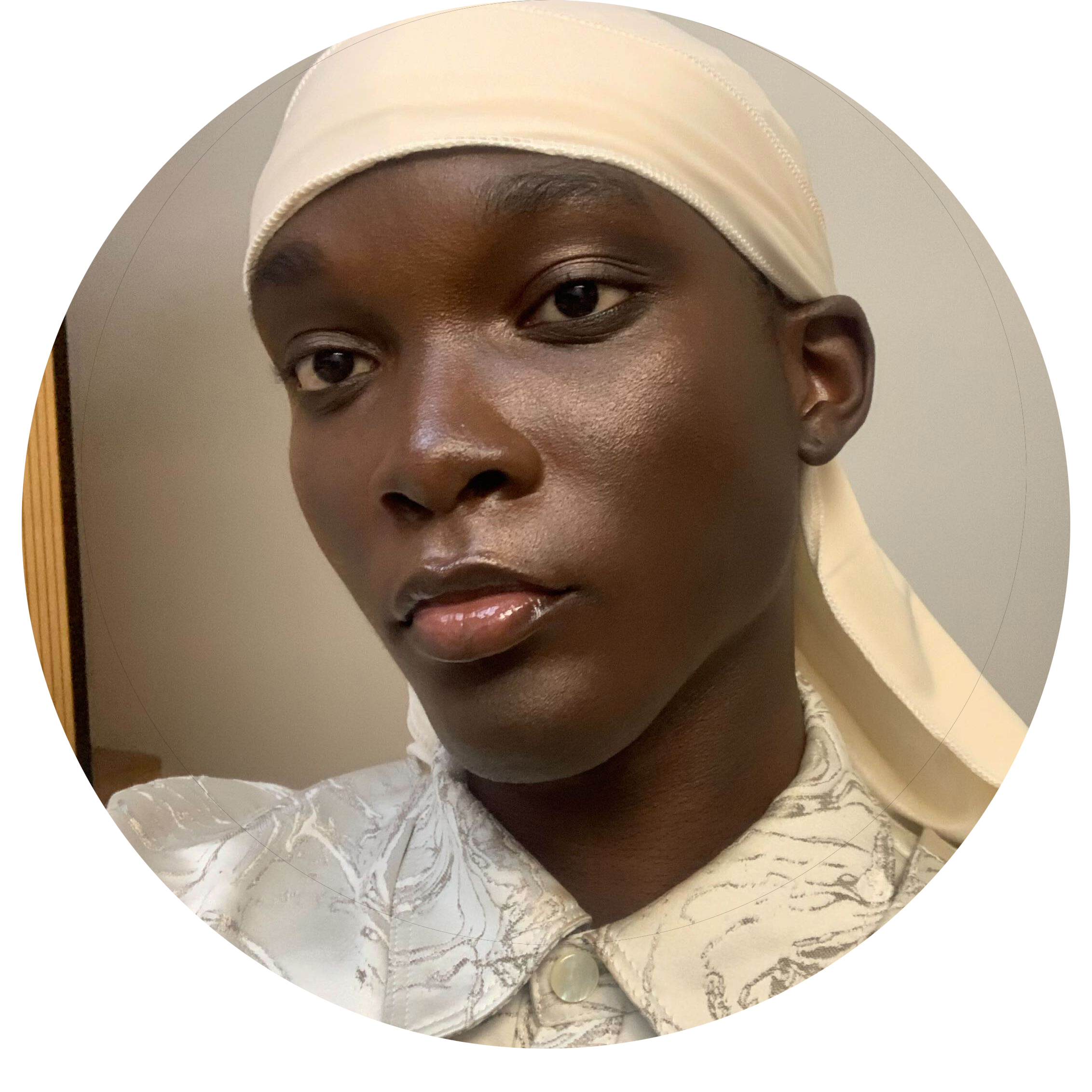 Jonathan Divine Angubua is currently finishing his undergraduate studies at the University of Toronto. He enjoys any interesting art and is always looking for great book recommendations. As a writer and lover of fashion, he is most inspired by strangeness and beauty.
Jonathan Divine Angubua is currently finishing his undergraduate studies at the University of Toronto. He enjoys any interesting art and is always looking for great book recommendations. As a writer and lover of fashion, he is most inspired by strangeness and beauty.

